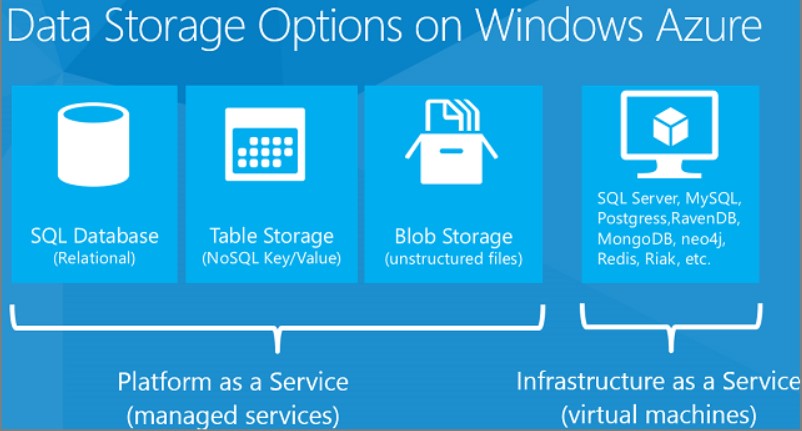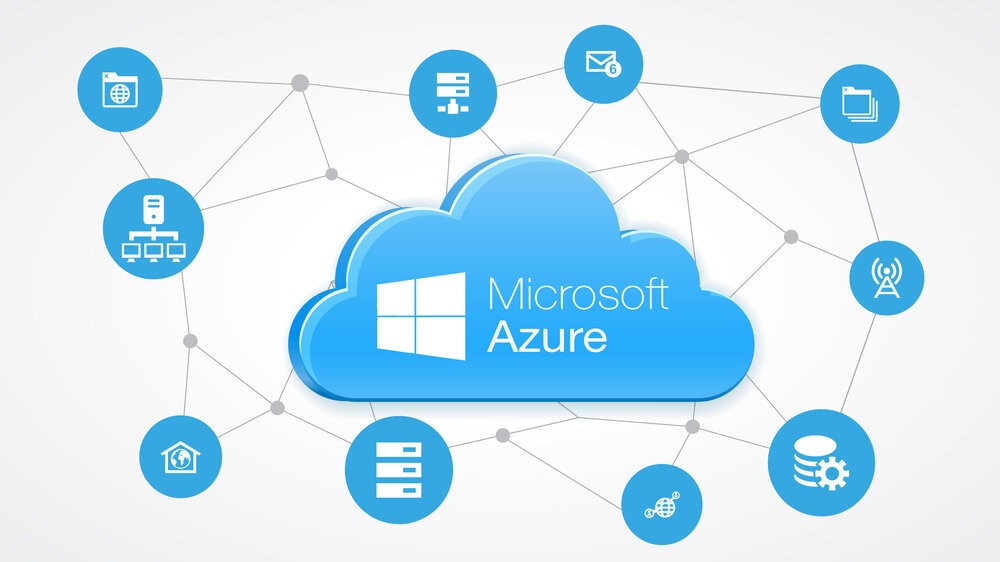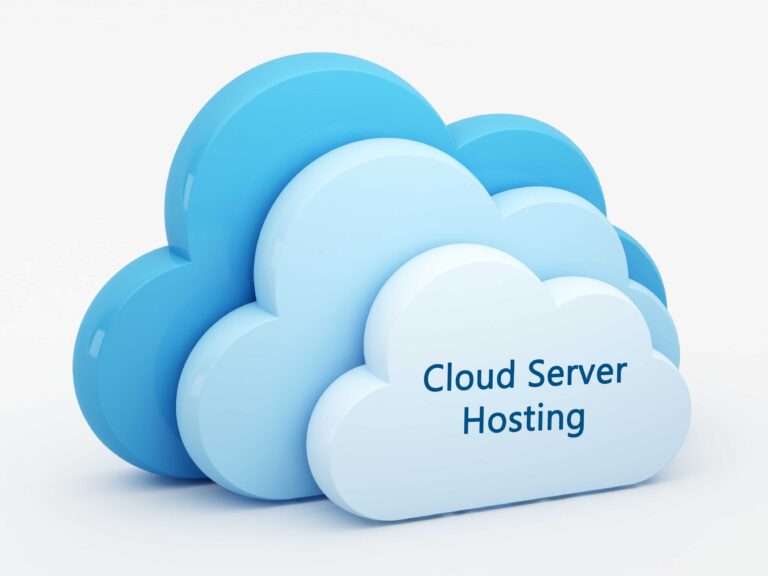Azure Cloud Server: Empowering Your Digital Infrastructure
As the digital world continues to evolve rapidly, businesses and organizations increasingly rely on cloud computing as a fundamental component of their IT infrastructure. In this context, Microsoft Azure has emerged as a leading cloud service provider, offering many powerful solutions and services. This comprehensive guide will take a deep dive into the intricacies of Azure Cloud Server, examining its many features, capabilities, and the numerous ways in which it can help drive your organization’s digital transformation journey forward.
Understanding Azure Cloud Server
Microsoft Azure is a comprehensive cloud computing platform and service that is designed to provide a wide range of cloud-based services. It allows organizations to create, deploy, and manage their applications and services through data centers that are managed by Microsoft. It has a global reach, with multiple regions and availability zones, making it a highly scalable, reliable, and secure platform. With Azure, businesses can take advantage of a powerful and flexible infrastructure that can help them achieve their goals while reducing costs and improving efficiency.
Amazon Cloud Server: Unleashing the Power of AWS
Azure Virtual Machines (VMs)
Azure Virtual Machines (VMs) are an essential building block of the Azure Cloud Server. They offer a versatile and scalable computing platform in the cloud, which can be fine-tuned to meet specific user requirements. With Azure VMs, users can deploy and manage virtual machines that run different operating systems, applications, and workloads. This allows for tremendous flexibility, from development and testing environments to production workloads. Overall, Azure VMs provide a powerful and agile computing solution that can scale up or down as needed.
Getting Started with Azure Cloud Server

Creating an Azure Account
If you’re interested in using Azure Cloud Server, you’ll be glad to know that the sign-up process is quick and easy. Simply visit the Azure website and complete the registration process. Once you’ve signed up, you’ll be able to access the Azure portal, which is the central hub for managing all Azure services and resources. From there, you can start exploring the various features and capabilities of Azure Cloud Server.
Accessing the Azure Portal
After logging into the Azure portal, users are presented with an intuitive and user-friendly interface that offers comprehensive management capabilities. The portal provides easy navigation, enabling users to access documentation, explore various Azure services, monitor resources, and configure settings. Whether you need to manage virtual machines or databases, the Azure portal provides a one-stop solution for all your needs.
Deploying Instances on Azure Cloud Server
Launching Virtual Machines
When it comes to deploying virtual machines on Azure Cloud Server, the process is incredibly streamlined. Users have access to a wide range of pre-configured VM sizes and configurations to choose from, or they can customize their virtual machines to fit specific workload requirements. This level of flexibility is further extended by the support for various operating systems and images, allowing users to create tailored VM instances that cater to their unique needs. All in all, Azure Cloud Server provides a powerful platform for creating and deploying virtual machines with ease.
Selecting Operating Systems and Images
The Azure Marketplace is a rich source of pre-configured virtual machine images, which includes a vast collection of popular operating systems like Windows Server, Linux distributions, and specialized images for specific applications and development frameworks. Apart from this, users can create custom images and also bring their existing virtual machine images to Azure to deploy them effortlessly. This feature-rich marketplace is an excellent resource for developers and businesses alike to get started with their cloud infrastructure with minimal effort.
Best Server Cloud: Navigating the Landscape of Cloud Computing
Managing Resources on Azure Cloud Server
Managing Virtual Machines
Managing virtual machines on Azure Cloud Server is both easy and effective. With Azure’s user-friendly interface, performing common tasks such as starting, stopping, and restarting VMs can be done directly from the portal. Moreover, Azure offers an auto-scaling feature, which allows users to dynamically adjust VM resources based on workload demands. This ensures that users have the flexibility to allocate resources as needed, making their cloud computing experience smoother and more efficient.
Monitoring Performance Metrics
Azure Monitor is a powerful tool that allows you to easily monitor the performance of your virtual machines. With a variety of monitoring and analytics features, this tool enables you to keep track of important metrics such as CPU usage, memory consumption, disk I/O, and network traffic in real time. This information can be used to optimize resource usage and identify any performance issues that may be impacting the efficiency of your system. By leveraging these insights, you can proactively address bottlenecks and ensure that your virtual machines are running smoothly.
Networking and Security on Azure Cloud Server

Configuring Virtual Networks (VNet)
The Azure Cloud Server is a powerful platform that relies heavily on networking to enable smooth communication between virtual machines, applications, and services. To create isolated network environments, users can set up virtual networks (VNets) with defined subnets. Additionally, network security groups (NSGs) can be configured to control traffic flow and enforce security policies, ensuring a secure and reliable network environment that meets the highest standards of performance and safety.
Identity and Access Management (IAM)
Azure Active Directory (AAD) is a crucial component that enables centralized identity and access management for Azure Cloud Server. By providing robust authentication and authorization services, AAD helps organizations to secure their cloud resources and data against unauthorized access. With the help of role-based access control (RBAC), Azure users can define fine-grained permissions and roles, allowing them to better regulate access to their Azure resources and data. This ensures that only authorized individuals have access to sensitive information, while also safeguarding against potential security threats.
Scaling and Load Balancing
Horizontal Scaling with Virtual Machine Scale Sets
Azure provides a useful feature called Virtual Machine Scale Sets that allows users to manage a group of identical VMs as a single entity. This horizontal scaling capability allows for the automatic scaling of VM instances based on predefined criteria, ensuring optimal resource utilization and high availability. With auto-scaling policies, users can easily set up policies that automatically scale VM instances up or down based on demand, enabling efficient resource allocation and cost optimization.
Azure Load Balancer
If you’re looking for a way to distribute incoming network traffic across multiple virtual machine instances, Azure Load Balancer might be just what you need. This tool is designed to ensure load balancing and high availability for your applications and services deployed on Azure Cloud Server. With support for a range of load-balancing algorithms and health probes, Azure Load Balancer can optimize traffic distribution and help prevent downtime. Whether you’re managing a complex cloud environment or just need a reliable tool to keep your applications running smoothly, Azure Load Balancer is worth considering.
Data Storage Solutions on Azure Cloud Server

Azure Disk Storage Options
Azure offers a range of disk storage options that cater to different storage needs. Managed Disks provide block storage that is persistent and can be used with virtual machines. They support both standard and premium disk types, which come with varying performance characteristics. You can choose the disk size and type that best suits your workload requirements, ensuring optimal storage performance and cost-effectiveness.
Azure Blob Storage
Azure Blob Storage is a highly efficient and economical solution for storing unstructured data such as images, documents, videos, and logs. It offers a scalable and secure platform for data storage that ensures high availability and data durability through built-in redundancy and data replication options. Blob Storage is a versatile tool that can be used for multiple use cases such as backup and archival, content distribution, and data analytics.
Backup and Disaster Recovery
Implementing Backup Policies
The Azure Backup Service is a reliable backup solution that offers protection for data and applications hosted on the Azure Cloud Server. With this service, users can easily create backup policies to schedule automated backups of virtual machines, databases, and file shares. This solution ensures that data is always protected and recoverable in the event of data loss or corruption.
Disaster Recovery Strategies
Azure Site Recovery (ASR) enables organizations to implement robust disaster recovery strategies, replicating VMs and applications to a secondary Azure region for failover and failback processes. With ASR, users can orchestrate disaster recovery drills, automate failover workflows, and achieve stringent recovery time objectives (RTOs) and recovery point objectives (RPOs).
Optimizing Performance and Cost Efficiency
Performance Optimization Techniques
When it comes to improving the performance of your Azure Cloud Server, there are various key factors that you need to consider. These include selecting the appropriate VM size, optimizing disk storage configurations, and making use of performance-enhancing features such as caching and acceleration. By closely analyzing the performance metrics and workload patterns of your Azure environment, you can identify optimization opportunities and fine-tune your setup for optimal efficiency. This will help you to achieve faster response times, lower latency, and an overall better user experience.
Cost Management Strategies
It is important to have a good grasp of the pricing models and cost management tools available in Azure Cloud Server to optimize costs. One such tool that can be leveraged is Azure Cost Management + Billing. This tool enables users to keep track of resource usage, analyze cost trends, and implement cost-saving strategies like utilizing reserved instances, spot instances, and resource tagging. By effectively using these features, users can significantly reduce their Azure bills while still maintaining the same level of performance and functionality.
Advanced Features and Services
Azure Kubernetes Service (AKS)
Azure Kubernetes Service (AKS) is a powerful tool that streamlines the process of deploying, managing, and scaling containerized applications using Kubernetes orchestration. By using AKS, users can take advantage of the benefits of containerization to build and deploy modern, microservices-based applications with greater flexibility and scalability. AKS simplifies the complex process of managing containerized applications, enabling developers and IT professionals to focus on what matters: delivering high-quality, reliable software that meets the needs of their customers.
Azure Functions
Azure Functions is a powerful tool that enables users to develop and deploy event-driven applications in a serverless environment without worrying about infrastructure management. This platform offers the flexibility to execute code in response to a wide range of triggers such as HTTP requests, database changes, and timer events, allowing you to quickly build and deploy serverless workloads. With Azure Functions, you can focus on developing your application logic without worrying about server management, scaling, or maintenance, making it an ideal choice for building modern, scalable applications with minimal effort.
Security Best Practices and Compliance
Implementing Security Controls
When it comes to ensuring the safety of data and applications on Azure Cloud Server, implementing robust security controls is of utmost importance. Fortunately, Azure provides several security measures that users can take advantage of. For instance, data can be encrypted both at rest and in transit, network security policies can be enforced, and the Azure Security Center can be leveraged for threat detection, vulnerability management, and security posture assessment. By implementing these security controls, users can rest easy knowing that their data and applications are protected from potential cyber threats.
Achieving Compliance Standards
Azure provides a comprehensive set of tools and services that enable organizations to comply with industry-specific regulations and standards such as GDPR, HIPAA, SOC, and ISO. By employing robust security controls, conducting regular audits, and adhering to compliance frameworks, users can demonstrate their commitment to regulatory requirements and build trust with customers and stakeholders. This not only ensures regulatory compliance but also helps businesses to safeguard their reputation and brand value in the market.
DevOps and Automation
Azure DevOps Services
Azure DevOps Services is a versatile platform that offers a wide range of tools and services to help teams implement DevOps practices successfully. The platform provides continuous integration, continuous delivery, and collaboration services that enable teams to automate their build, test, and deployment workflows. With Azure Pipelines, users can streamline their software delivery process, reduce time-to-market, and improve software quality by automating the entire software development lifecycle.
Automation with Azure Automation
Azure Automation is a powerful tool that allows users to streamline their operations by automating time-consuming and repetitive tasks. With the ability to create and schedule runbooks, users can automate routine maintenance, configuration management, and remediation tasks across various Azure resources and environments. By utilizing Azure Automation, users can reduce operational overhead and improve overall efficiency, allowing them to focus on more critical tasks.
Customer Support and Documentation
Accessing Azure Support Resources
Azure provides a wide range of support resources to its users, which include comprehensive documentation, knowledge base articles, community forums, and direct support channels. Users can easily access Azure Support through the Azure portal, where they can submit their support requests and communicate with Microsoft experts. Additionally, they can access various troubleshooting guides and best practices to help them address their queries and issues effectively.
Azure Learning Paths and Training Resources
If you are interested in building your Azure skills and expertise, Microsoft offers a range of learning resources and training paths. These include Azure certification programs, self-paced learning modules, and tutorials, which are designed to help you achieve your learning objectives and career goals. With these educational resources, you can explore various Azure topics and gain the knowledge and skills needed to succeed in the cloud industry.
Case Studies and Success Stories
Azure Cloud Server has been making a significant impact on organizations belonging to various industries. Real-world case studies and success stories demonstrate the business benefits, ROI, and customer testimonials, which provide valuable insights into how Azure is driving digital transformation and innovation. By showcasing these examples, businesses can understand how Azure can empower them to achieve their goals and stay ahead of the competition.
Future Trends and Innovations
Emerging Technologies in Cloud Computing
Azure Cloud Server’s evolution is influenced by the emergence of cutting-edge technologies like artificial intelligence (AI), machine learning (ML), edge computing, and the Internet of Things (IoT). As Azure progresses with its innovation, users can anticipate novel features and services that employ these technologies to enhance business value and expedite digital transformation.
Azure Innovations and Roadmap
Microsoft Azure is a cloud computing platform that is known for its continuous innovation and customer-centric development. The platform’s roadmap outlines its future direction, which includes new services, features, and enhancements in performance, security, and compliance. By constantly improving and updating its offerings, Azure is setting the stage for future advancements in cloud computing technology. This makes it a reliable and forward-thinking choice for businesses looking to harness the power of the cloud.
Conclusion
Azure Cloud Server is a versatile and all-encompassing platform that enables organizations to confidently build, deploy, and manage their digital infrastructure. With a vast selection of services ranging from virtual machines and data storage solutions to advanced services such as container orchestration and serverless computing, Azure empowers organizations to innovate, scale, and excel in today’s digital economy. By embracing Azure, organizations can unleash new opportunities, enhance efficiency, and expedite their digital transformation journey.





